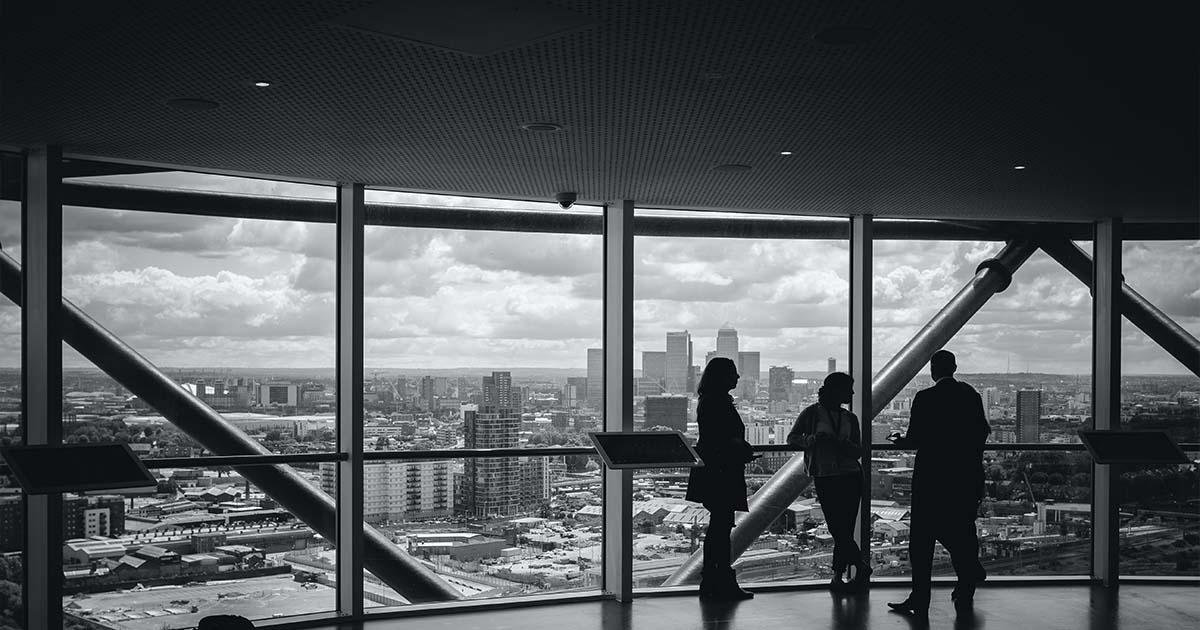Net Zero targets across Australia: A comprehensive overview by state and sector
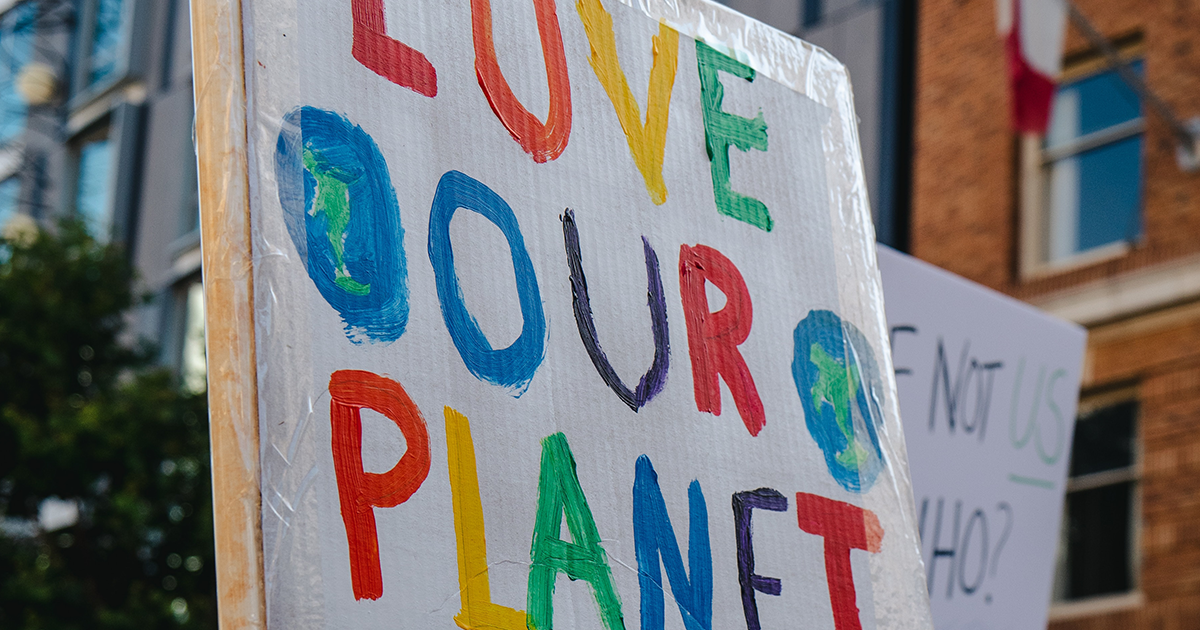
With COP28 due to take place soon, the world will be taking stock on its progress on the Paris Agreement and climate action. Let’s take some time to reflect on the Net Zero targets that the Australian Federal and State governments have committed to, along with highlights from high-emitting sectors such as transport, resources, and infrastructure.
QLD
The state currently has one of the highest rates of per capita emissions in the world and the highest emissions of any Australian state, at over 159MtCO2-e in 2020.
The Queensland Government has set economy-wide emissions reduction targets of:
- 2030: 30% reduction on 2005 levels
- 2050: Net zero emissions
We could expect to see more targets being fleshed out next year, as the state Government has noted the following procurement-specific requirements:
- “the Department of Environment and Science (DES) will work with priority 'categories' and 'agencies' to identify and estimate tonnes of greenhouse gas emitted
- an emissions baseline will be set for each priority 'category' by 2024 and priority procurement activities identified that can contribute to reducing agreed emission levels
- following approval of the emissions baseline and commencing from 2025, priority procurement activities will aim to reduce emissions by at least 30 per cent from the baseline by 2030, with a recommended target of 5 per cent reduction from the baseline per year.”
In March 2023, the Queensland Climate Transition Bill was introduced to Parliament, which:
- Bans new coal, oil and gas resources projects in Queensland
- Sets a 75% emissions reduction target by 2030, to reach net zero by 2035
However, the State Development and Regional Industries Committee recommended the bill not be passed.
Across the sectors, here are some notable developments.
Transport
Queensland’s Zero Emission Vehicle Strategy 2022–2032 and the first Zero Emission Vehicle Action Plan 2022–2024 set new targets for zero net emissions vehicles of:
- 50% of new passenger vehicle sales to be zero emission by 2030, moving to 100% by 2036
- 100% of eligible Queensland Government fleet passenger vehicles to be zero emission by 2026
- every new TransLink funded bus added to the fleet to be a zero emission bus from 2025 in South East Queensland and from 2025–2030 across regional Queensland.
The Department of Transport and Main Roads requires all major project sustainability assessments (exceeding $100 million) to utilize the Infrastructure Sustainability Council of Australia rating tool, attaining a minimum rating of 'excellent' or higher.
Energy
- 50% renewable energy target by 2030
- 70% renewable energy target by 2032
- 80% renewable energy target by 2035
- A 50% reduction in energy sector emissions on 2005 levels by 2029-30, and 90% by 2035-2036
Olympic Games
Brisbane 2032 is the first Games to contractually commit to being climate positive.
With approximately $220 billion of procurement expected in preparation for the 2032 Olympic Games, Queensland is dedicated to constructing infrastructure that achieves a 6 Star Green Star rating.
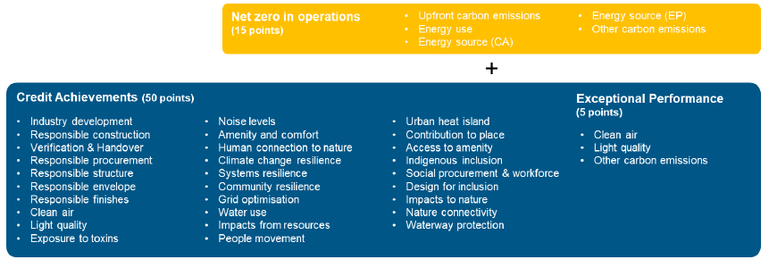
What a 6 Star Green Star rating entails. Source: Green Building Council Australia
NSW
A statutory net zero GHG emissions target for 2050
The Climate Change (Net Zero Future) Bill 2023 has been passed which legislates NSW's GHG emissions targets to:
- reduce net GHG emissions by 50% by 2030 (from a 2005 baseline)
- reduce net GHG emissions by 70% by 2035 (from a 2005 baseline)
- achieve net zero GHG emissions by 2050
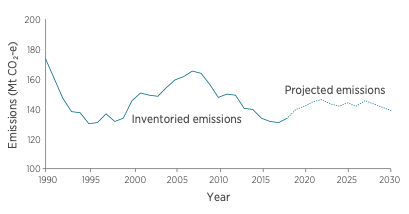
NSW total annual emissions to 2030. Source: NSW Department of Planning, Industry and Environment
Across the sectors, here are some notable developments.
Infrastructure
Infrastructure NSW (INSW) is taking action through three key initiatives, most of which we’ll see in full swing from 2024:
- “Decarbonising Infrastructure Delivery policy: The policy will set a clear mandate and provide guidance to agencies on how to consider embodied carbon throughout project development.
- Measurement guidance: Infrastructure NSW is developing a consistent approach to estimating and measuring embodied carbon that will be applicable in NSW and nationally.
- Regulation (Protection of the Environment Policy): in partnership with the Environment Protection Authority, Infrastructure NSW is developing a measure to require infrastructure projects to report embodied emissions and maximise the use of recycled materials as part of applying for planning consent.”
Transport
Transport for NSW has recently unveiled fresh climate change and net zero targets for its operations, alongside the introduction of a Sustainable Infrastructure Program. This program aims to integrate sustainability into every process, with key targets including:
- 100% renewable energy for operational electricity for the rail, light rail and metro networks by 2025 (already around 98% complete)
- 100% of Transport’s work vehicle fleet transitioning to all-electric by 2030
- Net Zero in Transport sector emissions by 2050
- Net negative transport sector emissions by 2060
Spotlight
City of Sydney, the first council to become carbon neutral in 2007, declared a Climate Emergency in 2019. They have set these targets in their 2021-2025 environmental strategy:
- 70% reduction in greenhouse gas emissions by 2030 from 2006 baseline
- net zero emissions by 2035
- 50% of electricity demand met by renewable sources by 2030
VIC
Victoria became one of the earliest jurisdictions globally to enshrine a net zero emissions target into law. The Government also brought forward the commitment to achieve net-zero from 2050 to 2045.
- 2025: 28-33% reduction on 2005 levels
- 2030: 45-50% reduction on 2005 levels
- 2035: 75-80% reduction on 2005 levels
- 2045: Net zero emissions
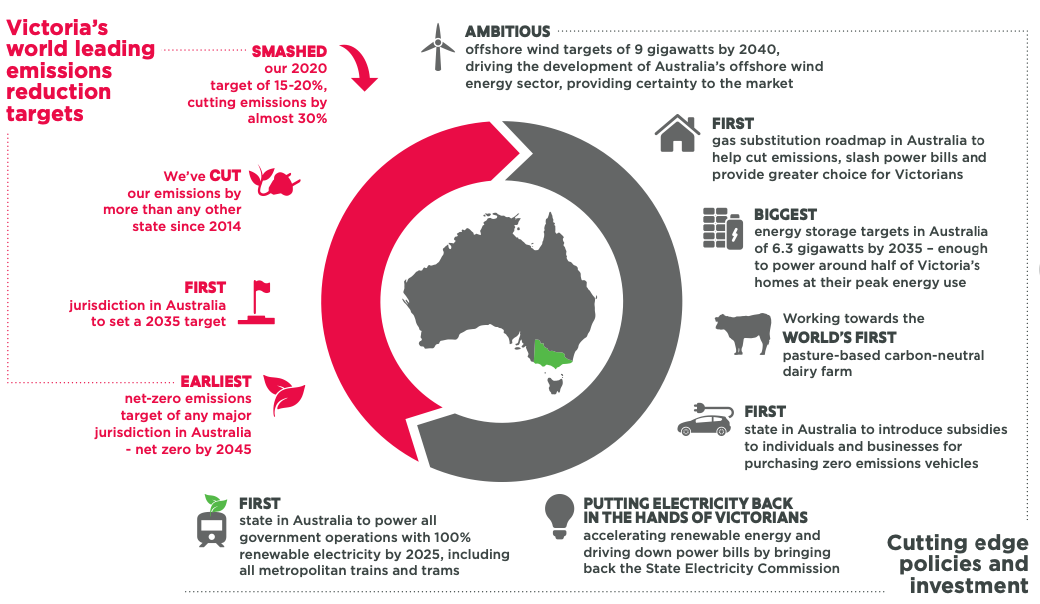
Across the sectors, here are some notable developments.
Transport
Transport is the second-largest source of emissions in Victoria. Here’s the pledge of this sector:
- Zero emission vehicles (ZEVs) will make up 50 per cent of all new light vehicle sales by 2030
- All new public transport bus purchases will be ZEVs from 2025
- 400 ZEVs are being added to the Victorian Government fleet by 2023
- Active transport will make up 25% of mode share by 2030.
Energy
Victoria’s renewable energy targets:
- 25% by 2020 (achieved)
- 65% by 2030
- 95% by 2035.
Water
The Victorian water sector is taking world-leading action to reduce its emissions. The sector has set targets to cut greenhouse gas emissions by:
- 4% by 2025
- 7% by 2030
- 100% (net-zero emissions) by 2035
Along the way, the water sector will source all of its electricity from renewable sources by 2025.
Spotlight
The City of Melbourne is implementing a Climate Change Mitigation Strategy with a focus on prioritising net-zero carbon buildings and precincts, adopting 100% renewable energy, promoting zero-emission transport, and reducing waste impact to facilitate the achievement of net zero operational carbon buildings.
Having operated as a carbon-neutral organisation since 2012, the City of Melbourne declared a Climate Emergency in 2019, leading to a commitment to achieving a net-zero emissions target by 2040.
A notable target within this is the target for all existing buildings to be “zero carbon ready” by 2040, which means more than 80 buildings will need to be retrofitted each year to reach this target. Retrofit Melbourne Plan was launched to support this goal.
South Australia
State targets
2030: 50% reduction on 2005 levels
2050: Net zero emissions
Energy
100% net renewable energy generation by 2030
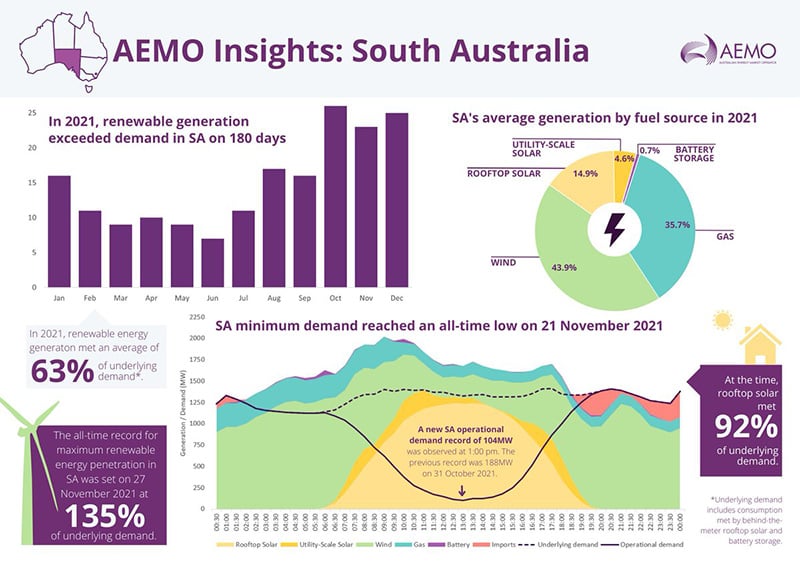
In terms of government procurement
From mid-2024, the Department for Infrastructure and Transport will require all suppliers tendering for work valued at more than $50 million to provide evidence that they have an organisational emission reduction target(s) addressing:
- scope 1 and 2 emissions (from their own fuel and electricity use)
- at least one scope 3 embodied emission source in their supply chain.
Western Australia
2050: Net zero emissions
While the WA Government has set a long-term goal of achieving economy-wide net zero emissions by 2050, interim targets and formalized emission reduction goals through legislation are yet to be established.
Nevertheless, the government is actively engaged in developing sectoral emissions reduction strategies (SERS) in collaboration with business and industry. We might see new policy and initiatives to support decarbonisation by the end of this year.
Australian Capital Territory
2025: 50-60% reduction on 1990 levels
2030: 65-75% reduction
2040: 90-95% reduction
2045: Net zero emissions
Northern Territory
2030: 50% renewable energy
2050: Net zero emissions
Tasmania
2030: Net zero emissions (achieved in 2015)
Federal
National targets
2030: 43% reduction on 2005 levels
2050: Net zero emissions
The Federal Government is also developing 6 sectoral decarbonisation plans, which will include pathways and goals for the major components of the economy. We can expect to see them unveiled next year.
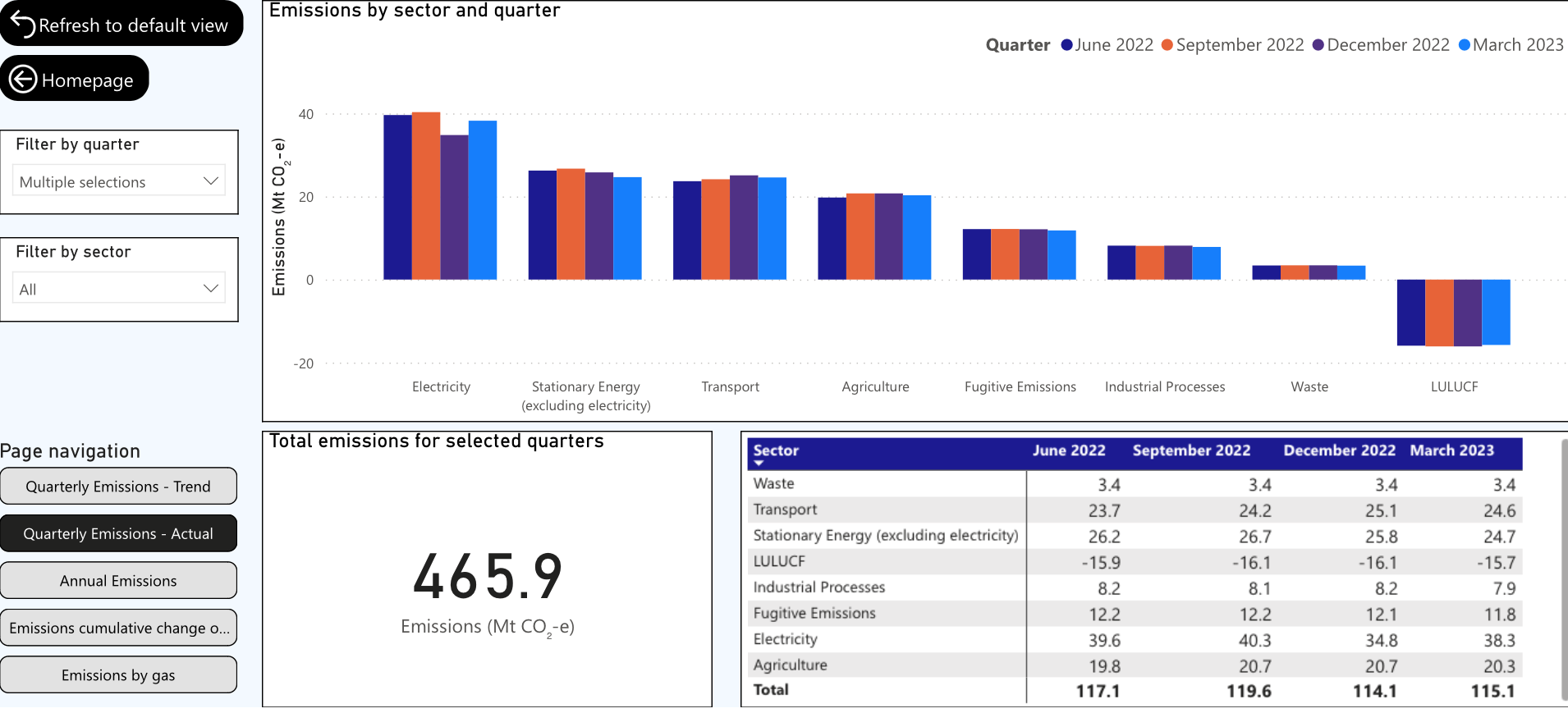
Emissions data by sector and quarter. Source: DCCEEW
Local government
The 2021 Australian Local Government Climate Review illustrates the level of ambition by Australian councils and communities regarding climate change. Some findings include:
- 73% of responding councils have set or are planning ambitious corporate or operational emissions reduction targets.
- 80% of responding councils have set or are investigating developing community-wide emissions reductions targets.
Global
Construction
The Net Zero Carbon Buildings Commitment
The Commitment recognises action by businesses, organisations, cities and subnational governments in addressing both operational and embodied carbon emissions within the building and construction sector.
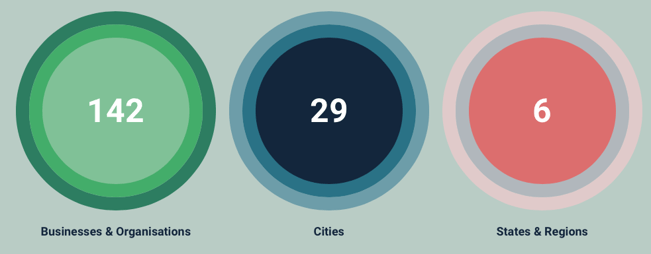
Current numbers of signatories
Race to Zero
As of June 2023, we have reached a tipping point, with 20% of key participants from various segments of the building environment value chain participating in the Race to Zero. This milestone signifies a unified direction within the sector toward achieving the 2030 Breakthrough Outcome (which means all new projects completed from 2030, are net zero carbon in operation, with >40% reduction in embodied carbon).
By revenue, globally, this includes: 17% of major construction companies, 31% of major real estate investors and real estate asset managers and 50% of major engineering consultants and architects.
Mining
International Council on Mining and Metals (ICMM)
Members of the ICMM have committed to a goal of net zero Scope 1 and 2 greenhouse gas (GHG) emissions by 2050 or sooner. This represents a joint commitment of companies making up one-third of the global mining and metals industry.
We might also see Scope 3 targets by the end of this year.
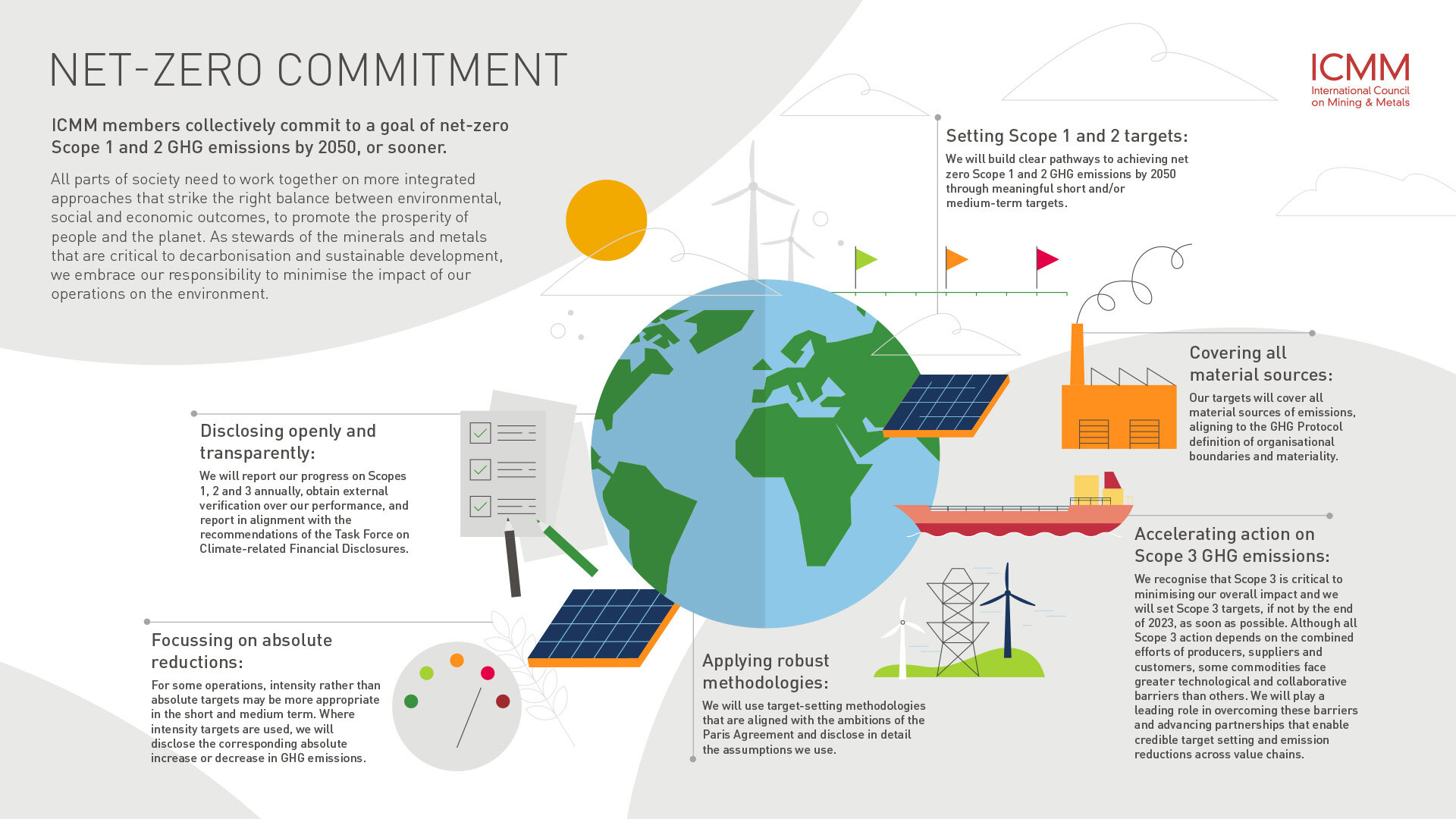
---
Is your organisation dedicated to achieving Net Zero? Embarking on this journey can be daunting as you navigate the complexities of reporting and monitoring your entire supply chain, while ensuring that everyone is aligned with your goals. Let's explore how Felix can support you in reaching your ESG objectives.

Recent Articles
2025 in review: Milestones, insights and achievements
2025 – a year of that brought meaningful developments for Felix as we continue to address the evolving needs of organisations navigating complex supply-chain environments.
Top 10 reasons for a centralised vendor database
As organisations grow, so does the complexity of managing vendor relationships. Many still rely on spreadsheets or siloed systems, which can lead to inefficiencies, data inconsistencies, and compliance risks. A centralised vendor database offers a smarter, more scalable solution that brings structure, visibility, and control to procurement operations.
Here are the top 10 reasons why centralising your vendor data is a strategic move.
Five ways poor contract storage could be costing your organisation money
Contracts are the backbone of every business relationship – legally binding documents that define expectations, responsibilities, and value.
But what if the way your organisation stores those contracts is quietly costing you money?
Let's stay in touch
Get the monthly dose of supply chain, procurement and technology insights with the Felix newsletter.



